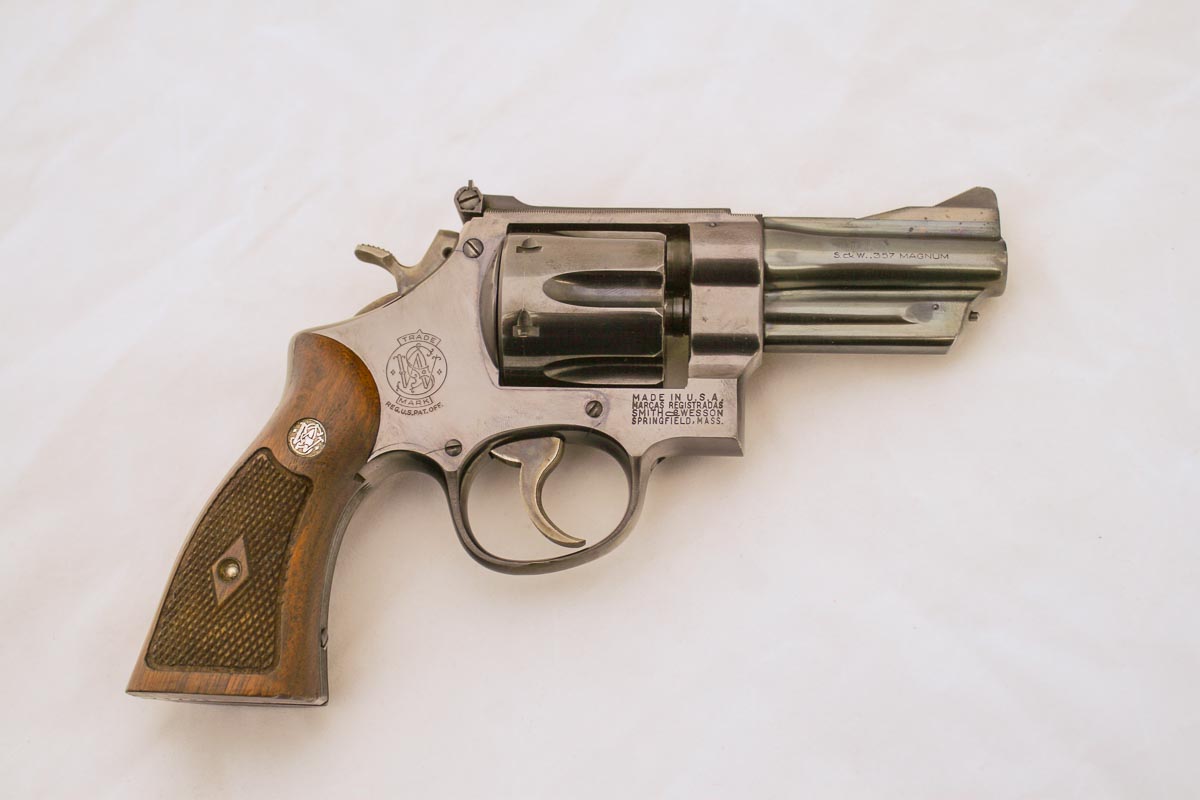There are certain guns whose shape and configuration just imprint on us and become iconic. The Luger pistol and the Mauser C96, the 1911, and the Colt Single Action Army. Sometimes it’s the shape of the barrel that makes the difference, a classic example being the much-copied vent-ribbed and under-lugged Colt Python.
But the only one I can think of where the barrel length made an actual difference was the 3.5-inch barrel version of the original Smith & Wesson .357 Magnum: a large-frame revolver in which the eponymous cartridge was introduced in 1935 and renamed the Model 27 in the latter 1950s. It is still available factory-new in 4-inch and 6.5-inch barrel lengths, but that iconic 3.5-inch has long since disappeared from the S&W catalog, unfortunately.

More’s the pity. I know what you’re thinking: “You can buy a four-inch, for Heaven’s sake, what’s the difference?” You have to understand that for us Boomers, that half-inch of extra barrel length looks as if you’ve taken the chrome “swoosh” off the side of a 1957 Chevrolet and made it…something else. Something lesser.
The Thing of It Is…
My old friend and senior gun writer, John Taffin, once wrote that no handgun looked meaner and more businesslike than the 3.5-inch Model 27. Its muzzle end flowed directly into its highly polished ejector rod shroud to make it look bigger and more dangerous than even the Colt Python that appeared decades later.
Master gunfighter Jelly Bryce made this 3.5-inch Magnum his gun of choice and used it in his famous speed sequence of quick-draw photos that appeared in Life magazine. It was also the choice of G. Gordon Liddy during his FBI years. In its first iteration as the Registered Magnum, it was famously carried by General George Patton in WWII, who called it his “killing gun.” While such gunfighting luminaries as Col. Charles Askins, Jr. and FBI’s Walter Walsh chose the four-inch barrel versions for their own use, it was usually the one with the half-inch shorter barrel that engravers chose to display their art and became the definitive shape of the “fighting” .357.

Personal Experience
Icons are, of course, subjective. I was born in 1948 and grew up in a bedroom whose bookshelf contained my dad’s copy of the 1947 Stoeger Shooter’s Bible. I read myself to sleep with it. Therein was a big picture of the S&W .357 with its then-longest 8 and 3/8-inch barrel and a smaller inset of the 3.5″ version. I imprinted on it, and as a little boy told myself, “I’ll have one of those someday.”

Time went on. When I was 15 or so, my dad gave me a Model 27-1 with an 8 and 3/8-inch barrel. A year or so later, I parked in the woods to go deer hunting and was loading the S&W in the front seat when I spotted a fox on the dirt road. Thinking my girlfriend might like a fox pelt, I swung the gun toward the open driver’s door window…and the long barrel clanked against the wind wing. By the time I had the .357 out the window, the fox had disappeared, doubtless laughing.
In the late 1960s, I got into bulls-eye shooting, won some trophies in Center-Fire with mouse-fart .38 wadcutters out of that long barrel, and in the early ’70s got into PPC. Master gunsmith Nolan Santy put a six-inch barrel on the 27-1, the maximum allowed in the game, and that .357 won me my first state championship (PPC) at age 25. I have it still.

The urge for a 3.5-inch 27 remained, but as a young guy with a limited budget, I couldn’t justify it. The police departments I worked for specified 4-inch barrels as a minimum for service revolvers, and the S&W Combat Magnum I was mandated to wear on duty in 1978 was lighter anyway.
Time went on some more. My lovely bride got tired of hearing me whine about it and bought me a 1953 “pre-Model 27” which I cherish. It wound up as an homage to General Patton, with faux ivory grips from Rajh Singh at Eagle Grips and a replica of the original S&W grip adapter from Ballantine. A former student and current good friend who credited me with teaching him something that saved his life gave me a Model 27-2 that went to another close friend, the late master revolversmith Denny Reichard, who slicked up the action and gave it Sambar Stag grips. It’s what I am most likely to wear when I need a “barbecue gun.”

Bottom Line
The Model 27 in its short barrel configuration combined the height of precision manufacture with splendid accuracy and fight-stopping power. It was a classic of its time, and its particular configuration was the very definition of “iconic” to generations of good people who went armed in harm’s way to protect the innocent.
S&W is still making Model 27s in its “Classic” line. Smith & Wesson, in my long experience with them, listens to their end users. If you’d like to see the three-and-a-half inch N-Frame .357 come back – perhaps in its last, short-lived eight-shot version – write to the company and let them know.


